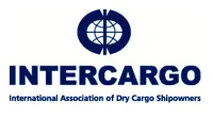Japan shipowners to seek alternatives to fossil fuels for IMO 2050 emission target
The Japanese shipping industry will seek alternatives to the fossil fuels used currently to meet the International Maritime Organization’s newly set target to halve greenhouse gas emissions by 2050, according to industry and government officials.

The Japanese shipping industry will seek alternatives to the fossil fuels used currently to meet the International Maritime Organization’s newly set target to halve greenhouse gas emissions by 2050, according to industry and government officials.
The IMO’s Marine Environment Protection Committee adopted a strategy on Friday requiring the shipping industry to reduce its total GHG emissions by 50% from 2008 levels by 2050, as well as cutting carbon dioxide emissions “per transport work” by at least 40% by 2030.
Tokyo has proposed cutting carbon dioxide emissions per transport work by at least 40% by 2030, an official at the Ministry of Land, Infrastructure, Transport and Tourism said Tuesday, adding that Japan is committed to making every effort to achieve both targets adopted on Friday.
Slow steaming of ships and optimizing cargo shipping arrangements could be among options to help cut carbon dioxide emissions per transport work by 2030, the MLIT official added.
But using petroleum regardless of sulfur levels — low sulfur fuel oil, high sulfur fuel oil or gasoil — would not help the shipping industry meet the IMO’s target to halve GHG emissions by 2050 without the emergence of a technology to capture carbon emissions, the MLIT official said.
Japanese shipowners would have to start considering “zero emission” fuel options when they consider building new vessels at an early date, following the latest IMO adoption, an official in charge of the IMO-related matters at the Japan Shipowners’ Association said Tuesday.
“The introduction of alternative fuels will be needed,” said the JSA official, adding that it would be difficult to meet the IMO’s targets with currently used fossil fuels.
The use of LNG can be among shipping fuels options in the medium term as it will help cut carbon emissions, compared with using petroleum, although it would not help achieve zero carbon emissions, the MLIT official said.
An official at Japan’s largest LPG supplier, Astomos Energy, which has been actively promoting LPG bunkering to meet the IMO’s 2020 low-sulfur mandate, said Tuesday that LPG might still be among the measures to cut GHG emissions in the event of having formal carbon regulations in shipping fuels.
A fuel mix of hydrogen, fuel cell or wind power are among zero-emission fuels that could be considered for shipping in order to halve GHG emissions by 2050, the MLIT and JSA official said.
Following the latest IMO development, an official at JXTG Nippon Oil & Energy said Tuesday that the largest refiner will consider its response in the future based on trends in the shipping industry.
Separately, the IMO decided in October 2016 to cut global sulfur emission limits for marine fuels from 3.5% to 0.5% by 2020. Ship operators will have to either switch to cleaner, more expensive fuels or invest in emissions cleaning systems to comply with the new limits. The IMO has not imposed any carbon cap in shipping fuels.
Source: Platts



